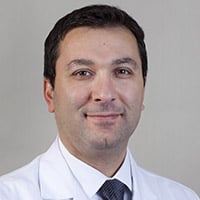 While not necessarily always the best course of treatment, the majority of men with prostate cancer will go with radiation treatment when confronted with options for treating the potentially deadly disease. Unlike other options, including surgery and chemotherapy, radiation treatment is a relatively “outpatient” procedure - with no anesthetic needed, targeted effectiveness, and relatively few short term side effects.
While not necessarily always the best course of treatment, the majority of men with prostate cancer will go with radiation treatment when confronted with options for treating the potentially deadly disease. Unlike other options, including surgery and chemotherapy, radiation treatment is a relatively “outpatient” procedure - with no anesthetic needed, targeted effectiveness, and relatively few short term side effects.
As the decidedly more attractive treatment option, is radiation therapy being overused in prostate cancer treatment?
 According to a university press release, a team led by Dr. Karim Chamie, an assistant professor of urology at UCLA, analyzed data from more than 37,000 prostate cancer patients.They found that the most common treatment for prostate cancer was radiation therapy (typically performed on the advice of a radiation oncologist), whereas surgeries and other therapies were much less popular.
According to a university press release, a team led by Dr. Karim Chamie, an assistant professor of urology at UCLA, analyzed data from more than 37,000 prostate cancer patients.They found that the most common treatment for prostate cancer was radiation therapy (typically performed on the advice of a radiation oncologist), whereas surgeries and other therapies were much less popular.
The researchers stated that urologists and surgeons were less likely to recommend surgery without considering outside factors such as the patients age and progression of the disease.
Results showed that radiation therapy was the most common treatment (57.9%), followed by radical prostatectomy (19.1%), and other treatments including wait-and-see approach and active surveillance (9.6%).
“Doctors and patients view radiation as safe,” said Dr. Karim Chamie, assistant professor of urology. “There’s no anesthesia or hospitalization, the patient comes in for 15 or 20 minutes for their daily radiation treatment, it’s localized to a specific area, then they get to go home. They often don’t notice any immediate effects upfront.”
The researchers followed up with data acquired from 2009, where it was “observed that men often start to suffer adverse side effects, such as urinary incontinence and leakage of urine, anal leakage and bowel dysfunction, erectile dysfunction, blood in the urine, and radiation cystitis.”
“Men fighting this disease don’t always need radiation or surgery as their only choice,” said Dr. Chamie. “As we find more reports demonstrating the safety and efficacy of active surveillance, I hope patients and physicians look to this as the first treatment option for low-risk and indolent disease. Here at UCLA, I am proud to say that we have a robust active surveillance program that utilizes MRI and targeted biopsies to monitor and survey these indolent tumors.”
According to their report, side effects and risks might be outweighed by the benefits of radiation for patients with aggressive cancer and otherwise long life expectancy. But for a patient with a slow-growing tumor and shorter life expectancy, radiation might not be worthwhile.
This is hardly the first foray into cancer researchers for the prominent scientists of the University of California, Los Angeles. For instance, in 2014, UCLA professor of molecular and medical pharmacology Hsian-Rong Tseng developed NanoVelcro - a sort of filter that would detain cancer cells as the blood passed through.
UCLA is also home to breakthrough research in the areas of cancer research, neurology and stem cell research. Some key stats from UCLA include:
- 2013 Life Science R & D Expenditures: 9th Ranking = $667,920,00.
- UCLA received 1778 awards and $397,282,282 award dollars YTD for FY 2014-2015.
- UCLA recently received $21 million in funding from the California Stem Cell Agency.
- Ranked 13th for NIH funding with $261,166,392 for FY 2014

With 290 medical research centers and institutions, UCLA continues to be a pioneer and an innovator with its state-of-the-art research funding, facilities, and researchers. If you’d like to increase your lab sales, consider targeting the UCLA marketplace at the 35th Semiannual Biotechnology Vendor Showcase™ Event at The University of California, Los Angeles (UCLA) on April 2, 2015.
Click below for more info:



